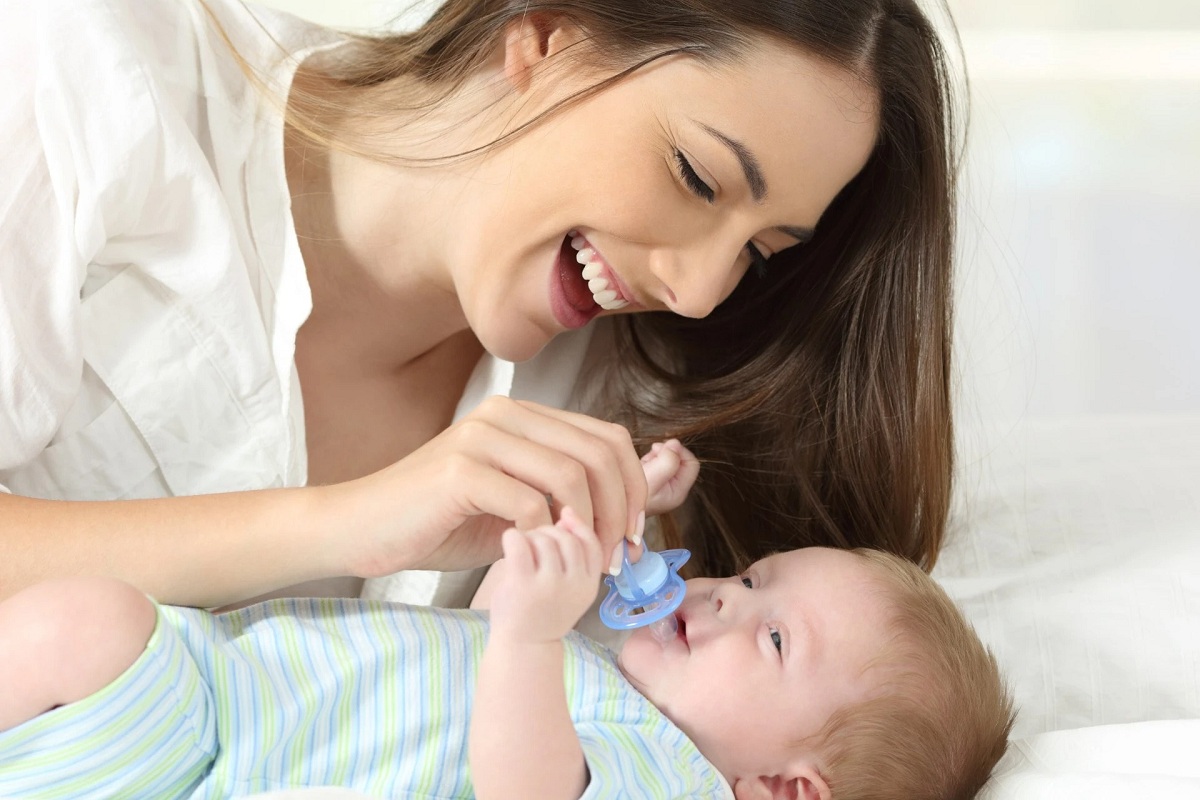Wondering if pacifiers have an expiration date? Or, how frequently should pacifiers be discarded?
If so, you’re not alone. This is a question often asked by new parents who have just amassed a little supply of their child’s preferred pacifier.
So that you don’t have any unanswered questions about your child’s pacifier, we’ve compiled this comprehensive guide.
You’ll discover how pacifiers become bad, how to check your baby’s pacifier, how to prevent your baby’s pacifier from becoming a hazard, and how often you should replace pacifiers.
Do Pacifiers Expire?
It’s not easy to give a definitive response, as some pacifiers have expiration dates and others don’t, which can be confusing for parents!
Indeed, how could a piece of silicone have a use-by date?
Products like pacifiers have expiration dates because the silicone or latex used to make them degrades over time.
These degrade quickly, making the product a potential choking hazard when it breaks into little pieces. The product’s expiration date indicates when the producer believes the ingredients will start to degrade even if the product is not used.
There should be a date on the back of the package indicating when the pacifier should be thrown away if it has one.
If you can’t locate an expiration date on the pacifier, or even if you can, you should still examine it for any symptoms of spoilage before giving it to your baby.

How Do Pacifiers Go Bad?
It’s natural to associate expiration dates with perishable goods like food, which inevitably spoil or lose their flavor at a certain point. Although the pacifiers probably won’t smell or taste any different to your kid, they will start to degrade.
Discoloration from exposure to heat and light, thinning down, and even the appearance of holes are all visible external indicators of this breakdown.
The pacifier can pick up a lot of bacteria from your baby’s mouth and from being in a sitting position.
When our babies’ pacifiers drop on the floor, the first thing that comes to mind is to wash the part that goes in their mouths.
Some pacifiers, especially those comprised of many pieces, might easily absorb water during the washing process. This can encourage the growth of mold and germs.
Here, you should do whatever it takes to protect your child.
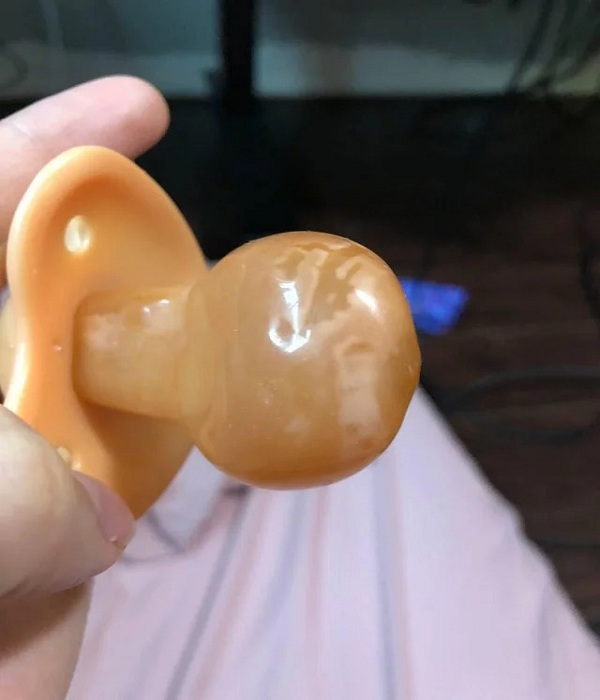
How to Check Your Baby’s Pacifier?
When the pacifiers your infant uses begin to wear out, you may notice holes appearing when you pull on the tip and stretch the pacifier from the base.
This will reveal tiny holes that aren’t yet visible if you don’t do this.
The microscopic holes in the pacifier will become larger as your baby uses it, eventually causing it to crack.
Miniscule pieces of silicone or latex can cause choking or even aspiration if swallowed. Each and every time you give your infant a pacifier, you should make sure it passes this test.
When using pacifiers with more than one piece, make sure to look for signs that water has not gotten inside.
After washing, hold the pacifier up to the light to see if any moisture or condensation remains.
Before you give the pacifier to your baby, you should always check these things.
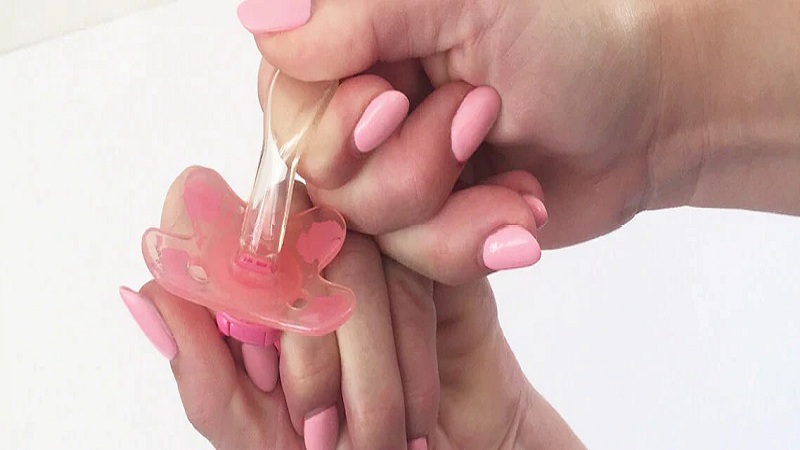
How to Prevent Your Baby’s Pacifier From Becoming Unsafe?
It’s best to get rid of a pacifier as soon as you notice any symptoms of wear and tear, such as a hole in the nipple or water inside the pacifier.
These are the early stages of the pacifier breaking down and going nasty.
If your pacifier breaks, it could pose a choking hazard due to the holes in it.
To avoid the pacifier becoming a choking hazard, you should upgrade your child’s pacifier as they become older, even if there are no visible signs of damage.
Even though it might seem wasteful to get rid of a pacifier that still works fine since your baby has outgrown it, this is important.
Allowing a baby of a different age to use a pacifier is risky because these items are made to be more gentle for babies. Baby pacifiers aren’t made to withstand the force of a toddler’s sucking or the sharpness of their new teeth.
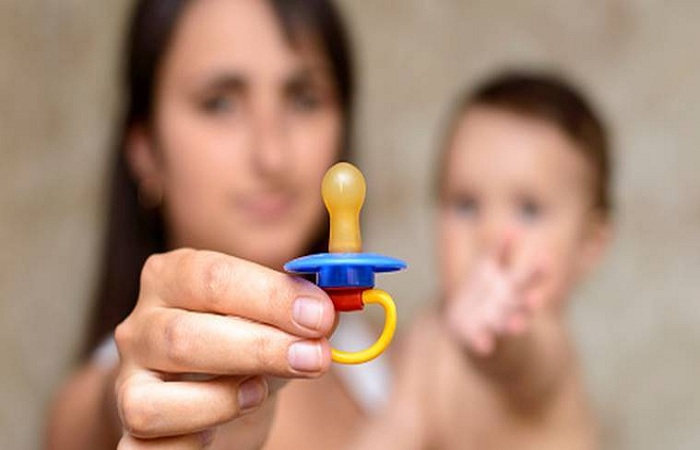
When Should Pacifiers Be Replaced?
The recommended frequency of pacifier replacement has surprised many new parents. Your pacifiers should be replaced every two to four weeks regardless of the expiration date shown on the packaging. The accumulation of germs and bacteria, as well as the product’s inevitable wear and tear, contribute to this.
Your pacifier’s expiration date is based on how long it will last if it remains unopened and unused by your infant or toddler, not on how long it will last if exposed to the elements and the general wear and tear of everyday living.
It’s important to replace pacifiers on a regular basis because even though you clean and sterilize them frequently, they eventually wear out and create crevices where bacteria and germs can thrive.
You should replace a pacifier frequently even if it does not appear to be in particularly bad shape.
That’s because their special shape prevents damage to your child’s developing jaw and teeth. Pacifiers can cause dental and jaw alignment issues as their shapes alter as newborns use them. Replace the pacifier if you see any noticeable changes in its shape.
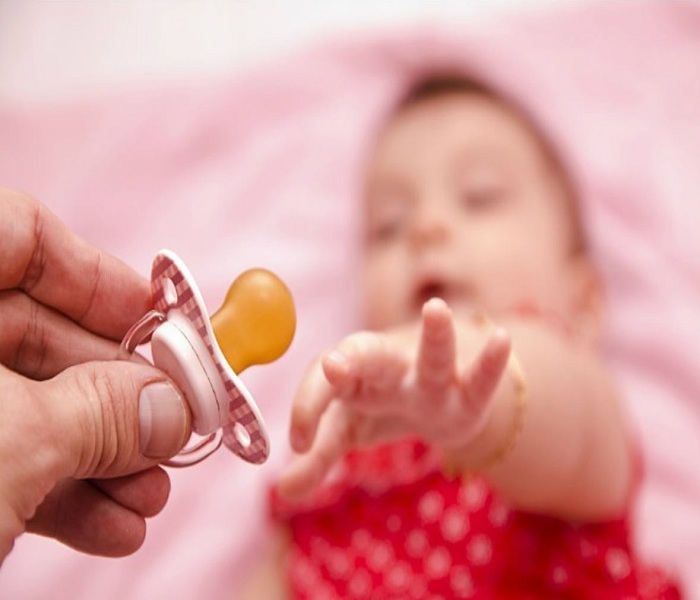
When Else Should You Replace Your Baby’s Pacifier?
Even if your baby’s pacifier appears to be in good condition, there are a few situations in which you should consider replacing it.
Leaving a pacifier in direct sunlight for an extended amount of time can cause the materials to deteriorate, which in turn can create damage that might make the pacifier a choking hazard for your child.
If you find your baby’s pacifier after it has been left in the car or the sun for a few days, you should throw it away to prevent anybody else from giving it to your child and perhaps causing injury.
What If My Baby Is Attached To One Particular Pacifier?
A baby may develop a strong attachment to a particular pacifier.
If this happens, it’s a good idea to stock up on a variety of their go-to items in different sizes.
If you keep several pacifiers on hand, replacing a lost one is as simple as grabbing a new one, which simplifies your life in a number of ways.
A parent’s time is valuable, so anything that can help them out is a good idea.
Final Thoughts
Regardless of whether your pacifier has an expiration date printed on it, you should replace it on a regular basis because it will wear out eventually.

